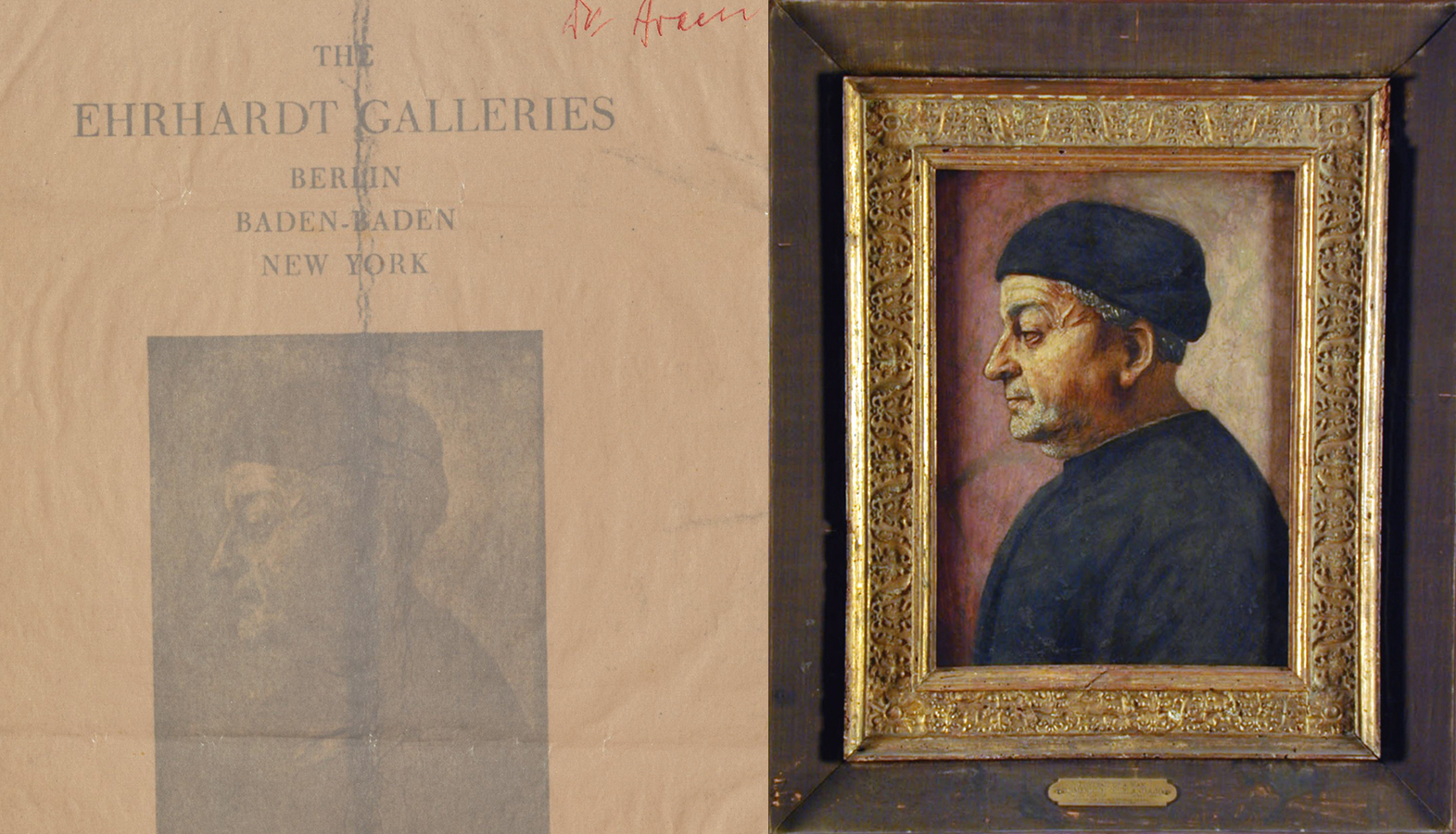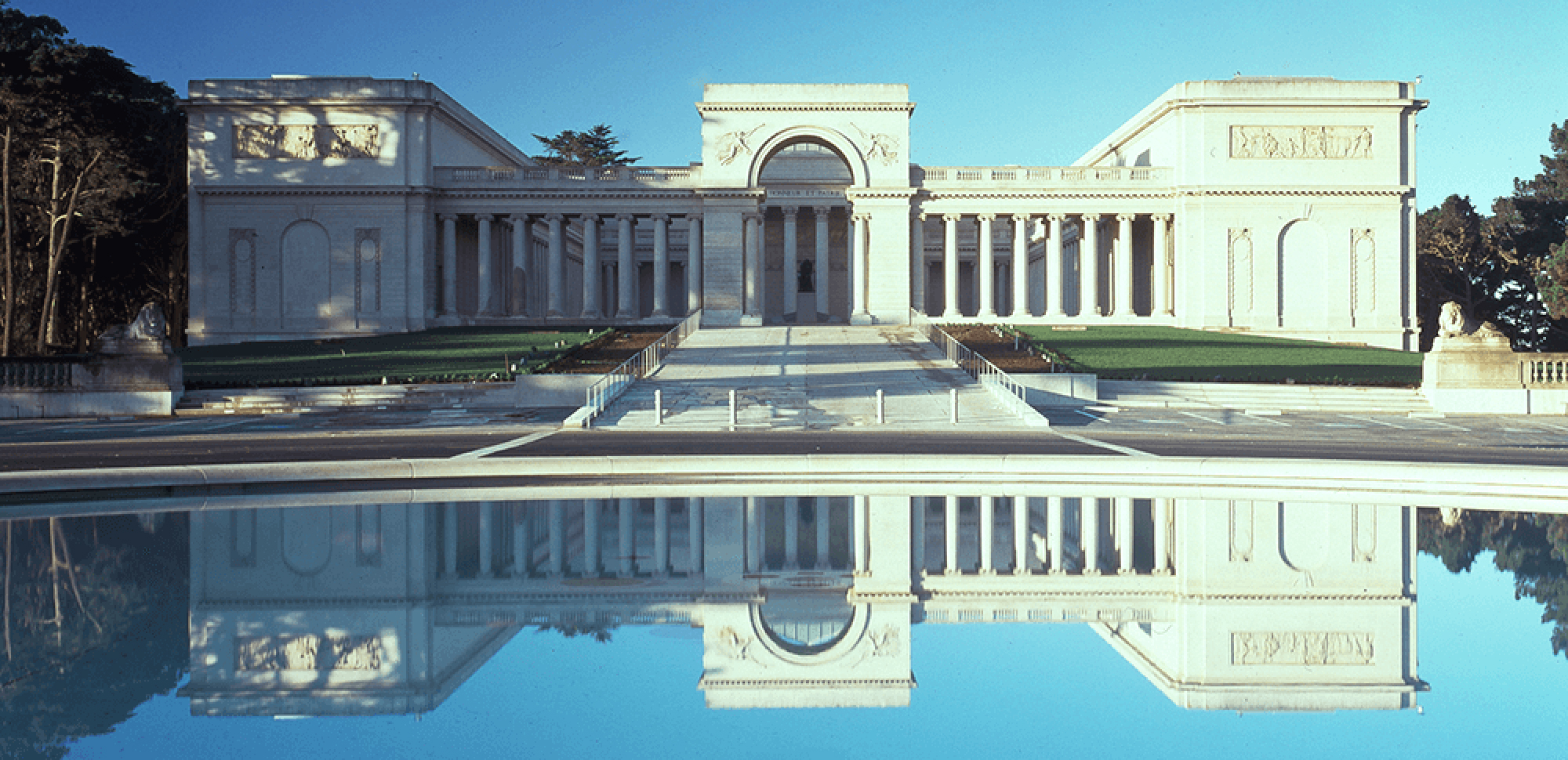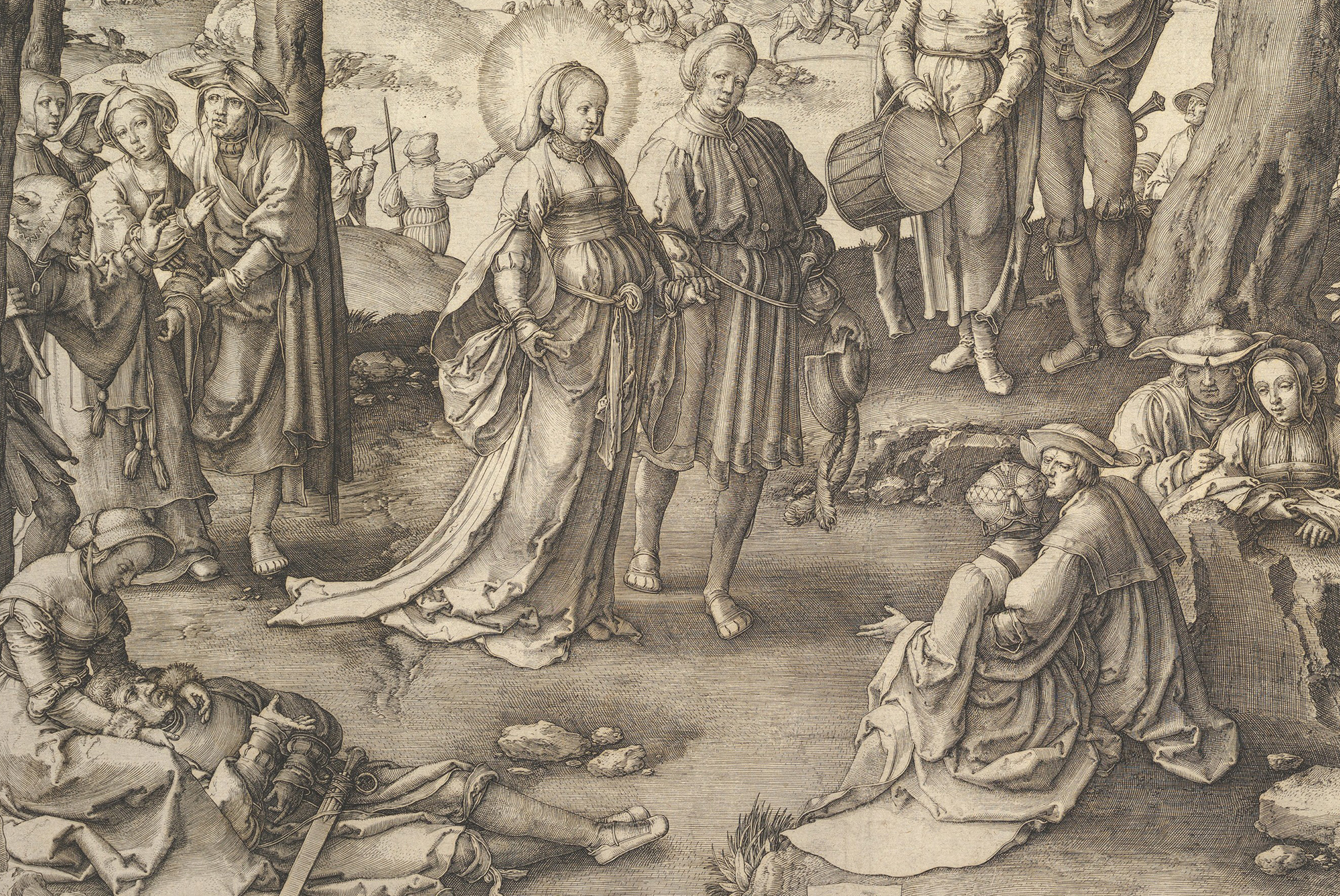
A Story of Emigrants and Looted Art
Once they’ve been famous art dealers in Berlin in the 1920s: Siegfried Aram and Heinrich Grünwald, who fled Germany 1933. Their family roots go back to Jewish community in a town close to Heidelberg, city of Heilbronn.
Time echo found court records in Germany, more material in the US, re-evaluated old handwriting of Siegfried Aram – piece by piece a dramatic story is rediscovered. Much in Siegfried Aram’s letters sounds incredible – and yet time echo was able to verify names, places, and events with independent sources.
Rediscovering the Aram Letters
Siegfried Aram was 71 years old living in New York when he wrote letters to historian Hans Franke in his old hometown Heilbronn in 1962. The old was full of wild stories, but Hans Franke in the 60s chose very diplomatically only parts to create a noble family history for publishing. The real drama is revealed in the unpublished parts of the letters. Many decades later, Siegfried Aram now speaks to us again in this hand-written lines, telling the story of persecution and looted art.
A Biography like a Rollercoaster Ride
Born and grown up in romantic town Heilbronn in Southwest Germany, Aram developed strong ties to his region, its traditions and dialect. The Jewish community in Heilbronn wasn’t a fringe group, but played a major role in contributing to the community, the upswing of the Gründerzeit. Heilbronn had one of the strongest Jewish communities in the southwest.
Below: House of Siegried Arams family in center of Heilbronn

Aram experienced anti-Semitism at an early age in the narrow-minded authoritarian school in Bismarck Street, but through his family with international relationships he also developed a cosmopolitan spirit, was fluent in English and French.
Like his role models, the liberals Siegfried Gumbel and Max Rosengart, who embodied the good reputation of the Jewish community in town with their social commitment, Aram chose to study law after graduating from high school in 1908. In 1914, he volunteered for the army after the outbreak of war. He survived. After the war, he represented the famous automobile inventor Bosch and the aircraft manufacturer Heinkel as a lawyer, and founded a magazine for culture to celebrate a young generation after the war. Unfortunately, his co-founder does so (“because of a painful war wound”) with cocaine, and soon plunges the young awakening into chaos.
Their new magazine is full of satirical wit and black humour right after WWI

A New Beginning
Enthusiastically aiming for the big picture: they founded a magazine for art, literature, theater, fashion, technology and nature. And Siegfried Aram has his first success: he is able to negotiate with the founder of the big industrial company Bosch, Mr Robert Bosch in person and promote the founding of an adult education center and travelling theater – affordable education and culture for the masses.
“I supported young writers and artists (Bauhaus artists as Schlemmer, Baumeister) as best I could.”

“I put a lot of money into this rather amateurish weekly. But then I had the pleasure of teaching at the new adult education center [called “Volkshochschule”], which I had discussed with Robert Bosch – for three semesters as a lecturer in front of a large and grateful audience (art history, Hellas, Rome and the Renaissance)”.
The passions of the later art dealer showed up early. But right-wing protesters showed up at one of his lectures.
Suddenly on the Death List
Unsettling how quickly one becomes a target of the right-wing death squads: Aram reports in the letters to historian Franke, a companion of his art magazine named Will Stephan “had gotten into the habit of snorting cocaine. His addiction led him to steal gasoline supplies, which were intended to be used to shift weapons for right-wing radical groups. Therefore in custody, he turned to me as his defense attorney.”
The petty crime of a gasoline theft accidentally caused a scandal. Siegfried Aram followed the law to report the possession of illegal weapons and informed Interior Minister Graf in Stuttgart. The right-wing radicals did not like this at all, the next bullet was intended for Aram.
“I would certainly have been murdered back then if (…) precautions had not been taken, because the member of the state parliament Gneis and several others were actually shot because of this matter.”
First Time on the Run
“Police Director Hahn and Chief of Police Robert Albrecht (from Heilbronn) informed me that I was to be killed by the Feme as a ‘traitor to arms’. I wanted to play the hero, but Hahn and Albrecht […] informed my father, who came (…) with attorney Rosengart, and at Rosengart’s insistence I went on a trip to Switzerland (…) later I lived in my house in Gethinerstraße in Berlin in the Old West of Berlin until the […] coup d’état (…). Grünwald had me guarded day and night by guards with police dogs (…). You can read about this in Prof. Dr. Gumbel’s book “three years of political murder”, I think it was published in 1922. By the way, Dr. Gumbel, together with former chief police director Paul Hahn, testified in my restitution trial concerning the Schapbach estate (…).
Turning Point Berlin
“In Berlin, I then met with the general director of the state museums, Doctor Wilhelm von Bode (…) I helped this brilliant and creative man (…) I uncovered a corruption scandal which for years prevented the completion of the Deutsches Museum, the Museum of the Ancient Near East and the Pergamon Museum in Berlin. It was completed after my intervention, to Bode’s delight (…).”

Jewish collectors played a major role in the establishment of the Berlin museums, like James Simon, who donated the bust of Nefertiti, Echnatons wife to the museum (later on Simon advocated its return to Egypt). Simon donated a fortune, was once a close advisor to Emperor Wilhelm II, and calmed the Emperor’s anti-Semitism. Siegfried Aram and Heinrich Grünwald became involved in Simon’s “Association for the defense against anti-Semitism”, which the patron co-founded in 1890.
Success of the Art Gallery
“… after the death of my father in 1925, I participated with my father’s inheritance in the Galerie Ehrhardt GmbH in Berlin, which had been founded by (…) Paul Martin Ehrhardt, my uncle and myself. But Erhardt died afterwards. I worked as a buyer and art critic. The gallery (…) was one of the largest galleries for old art in Germany. Publications of masterpieces that I discovered, such as the ‘Magdalene dance’ by Peter Breughel the Elder (through Prof. Dr. Winkler) and others, can be found in the ‘Pantheon’ and ‘Cicerone’ before 1933”.
The “Magdalene dance” (now lost) was published in the journal “Pantheon” in 1928 – for a reconstruction of the picture see end of the article.

Expansion to the US
“In 1928 I came to the USA, accompanied by Dr. Alfred Frankfurter, the current editor of the well-known magazine Art News, who (…) became secretary of the American branch of Erhardt Galleries […], but I did not open a gallery, only a head office in the Hotel Langdon, 5th Avenue 56th Street, which supplied the well-known American galleries P. J. Higgs New York, Anderson Chicago, Thompson Detroit and Traxel […] Cincinnati with commission goods.”
Aram sold this work by Tournier to the museum in St. Louis

Here on 5th Avenue near Tiffany, Aram opened its first representation in the US. Today Trump Hotel is located at this place.

Below: Cosimo I. de Medici by Cellini, mediated to the San Francisco museum by Siegfried Aram.

“The museums, especially in Detroit, Michigan and later San Francisco […] the National Gallery in Washington D.C., then also the […] in San Diego, Los Angeles, Raleigh, North Carolina have been supplied by my gallery, partly like San Francisco and Detroit with the most important pieces (‘Judith’ by Titian, […] by Verrocchio, Cellini, Ghirlandaio etc).”
Siegfried Aram returned to Germany again and again, invested large sums of money with Heinrich Grünwald in a house in the Black Forest, the “Schlössle” Schapbach, an estate full of art treasures, where he often invited his international business partners.
But January 1933 life was turned upside down.
1933 - Escape to New York
“The affair about [illegal weapons in the early 20s], however, was not forgotten, as the director of AEG, Hirschberg, told me – Reich Chancellor von Schleicher had given Hirschberg insight into a secret Nazi list of arrests played into Schleicher’s hands, and I was one of the first on the list. At the time of Hitler’s appointment as chancellor, I went to New York.”…

“There I had a friend, the lawyer Samuel Untermeyer, politically powerful, rich, on a magnificent, art treasured Greystone estate [north of New York], who stood up for German art and culture. Untermeyer was of German Jewish origin. I explained to him about [German fascism] and its leaders, and after the local Nazis sold string literature and the Stürmer here in Times Square, held parades, founded a camp called “Northland,” etc., (…) Untermeyer helped to found the Anti-Nazi League, for which he made 250,000 $ available. People like Thomas Mann, later Fritz von Unruh, Georg Grosz and others joined in!”
1934: In New York 20,000 Nazi supporters gather in Madison Square Garden.

Back in Europe - Everything is lost
“However, I had to leave the USA because my visitor’s visa had expired, and I chased all over Europe for an immigrant visa to the USA. The Nazis had been in my apartment briefly during the time of the Jewish boycott. My uncle and partner Grünwald, who was afraid of ‘clan custody’, fled to Czechoslovakia; my mother, who suffered from stomach cancer but had been summoned to appear, was made up on another woman’s passport by an Aryan friend of high standing (…) and brought to Meran [in Italy] before her “beautification” in Colombia Haus [Gestapo prison and concentration camp near Tempelhof airport, which would otherwise have expected her] (…) We couldn’t take anything with us, we left behind [inestimable] values in Germany: Paintings, works of art, houses, bank notes and for hundreds of thousands of bills from American art companies that had sold paintings for us, like the Anderson Gallery in Chicago. These bills were cashed but the […] blocked!
(…) The galleries were closed and everything was [confiscated or lost in forced sales for cheap price], houses, works of art, even our “Schlössle” Schapbach. We, my uncle and I, had acquired this in the 1920s, it is a […] building with terraces, a park, a farm, which I set up as a museum […] with many stone Baroque figures (…) small hermitages, which were inhabited by friends in the summer, for example by Professor Hans Hildebrandt and other art critics and painters.
In the spirit of our witty friend Doctor Putzinger, I had also put together an extensive collection of masks there: African, Indian, Indonesian, Malay, Japanese No-masks and those of the North American Indians (…)
The ‘Schlössle’ was then sold, or rather squandered, before my mother’s ‘departure’ in 1933, and the new owner, a Mr. Sommer from Trier, threatened my mother on letterheads as chairman of a National Socialist association and extorted unsold objects with a declared value of $ 16,000 (…) perhaps I would have won the restitution court case, but I had no money […] for lawyers’ advances, and the amount in dispute was high.
August 30th 1962, New York
“Dear Mr. Franke!
(…..) Then one more thing: in exile I had to replace, for $186,000, pictures which were given to my partner and uncle in Karlsbad by English merchants on commission after he emigrated from Berlin. When the Germans invaded Czechoslovakia, he fled again. The Gestapo confiscated all his own and foreign art and the efforts of the English owners were thwarted by the outbreak of war (now it was enemy property). I, however, had signed a contract of detention for the old man (Czechoslovakia was considered absolutely safe!).
The insurance was not liable for war or revolutionary damages. Also Nazi brutes in Germany blackmailed (sorry: they ‘aryanized’) and then stole everything, the ridiculous restitution law demands after all these years, I should prove where the stolen pieces are! I have no money for detectives, because I am old and sick.
I enclose a […] copy of a brochure printed for Americans in 1932 about the Galerie Ehrhardt, which belonged to my uncle and me […] (by the way, the Stuttgart gallery also has a Carlo Carlone of mine). All this was destroyed. And we brought millions to Germany, faithful to the foreign exchange laws and loyal to our homeland, which has driven us out!”

Struggle for a Visa
After months applying for a visa, Siegfried Aram was finally able to re-enter the US in 1934. Many of his relatives stayed behind in Europe, facing an uncertain fate. Siegfried Aram was lucky – but soon again he was caught up in dramatic changes.
In the next chapter:
On the Run
How Marlene Dietrich saved his life
Continue here
destination San Francisco (Legion of Honor Museum)

Letters by Siegfried Aram (Heilbronn city archive) The main source is a 24-page letter dated August 20, 1962; quotations from other letters are marked separately. The original manuscript is difficult to decipher. Unreadable words are marked with […].
Below: sources (German language)
Erwähnte Kunstwerke
Siegfried Aram erwähnt seine Entdeckung des Bildes „Magadelenentanz“ von Brueghel dem Älteren. Friedrich Winkler stellte es 1928 in der Zeitschrift “Pantheon” vor. Das Bild gilt wohl als verschollen – Zeitsprünge rekonstruierte das Bild mittels Teilaufnahmen im “Pantheon” von 1928:

“Der Magdalenentanz” ist die Bezeichnung des Sujets (die Aram in Erinnerung war), der genaue Titel im “Pantheon” ist jedoch “Die Weltfreuden der Maria Magdalena”. Winkler vermutet, Brueghel habe sich in dem Zwerg der Musikergruppe selbst portraitiert.
Das Sujet “Magdalenentanz” war zu Breughels Zeiten noch relativ neu und geht auf einen gleichnamigen Stich von Lucas van Leyden zurück (siehe unten), der im Jahr 1519 entstand. Die Legende, Magdalena sei eine Kurtisane gewesen, wurde im 16. Jahrhundert populär. Van Leyden schmückte es als einer der Ersten zu einem Sujetbild aus, in dem sich das Kurtisanenleben im Landsknechtmilieu seiner Zeit wiederspiegelt. Andere Maler wie Breughel griffen das Thema dann ebenfalls auf. Mit dem Vorwand eines bliblisches Motivs konnten sie ein Gesellschaftsportrait ihrer Zeit zu einem Thema schaffen, das sonst kaum Darstellung in der Kunst gefunden hätte.

Below: sources (German language)
Quellen
(Auszug)
______
Das gelbe Blatt, Zeitschriftengrüdung 1919, S. Aram und Will Stephan
Deutsche literarische Zeitschriften 1880-1945: Ein Repertorium
von Thomas Dietzel, Hans-Otto Hügel, Seite 489, das gelbe Blatt
______
Die Handschriften Siegfried Arams (Briefe an Hans Franke von 1962 bis 63) sind als Creative Commons in der Heuss Datenbank (StA Hn) zugänglich.
Die jetzige, neue Auswertung der Handschriften zeigt u.a. Entzifferungsfehler bei Hans Franke – so wurde jahrzehntelang vermutet, Siegfried Aram habe sich mit der Angabe Kaiserstraße 21 für das Haus seiner Kindheit und Jugend geirrt, doch in der Handschrift steht völlig richtig 27.
Das Foto der Kaiserstraße zu Beginn des Kapitels kommentiert Siegfried Aram so:
„„Im Vordergrund das von meinem Großvater Grünwald und meinem Vater erbaute Wohn- und Geschäftshaus Kaiserstraße 40, links das bügeleisenförmige Gebäude, Kaiserstraße 27 in welchem meine Familie wohnte. Weiter oben, wo ein aufdringliches Hofbräu (das wir nie geduldet hätten [?]) angebracht ist, ein anderes Haus, dass mein Onkel Heinrich Grünwald, (Bruder meiner Mutter) gehörte und von meinem Vater finanziert war. Das längliche neue Haus, im selben Block wie Kaiserstraße 40 gehörte auch Grünwald, Architekt war Professor Beutinger (…) Auch am Marktplatz und anderen Orten (Kaiser-Café) hatte Heinrich Grünwald […]Besitz, bevor er nach Baden-Baden zog.
Ein neues Bildnis des Bauernbrueghel , “Pantheon” Band 9 (1928) p. 456-461
Gardens of Earthly Delights von Kahren Jones Hellerstedt, S.42-43, Kapitel “Dance of Mary Magdalene” mit Erwähnung des Brueghelbildes und Fußnote zu “Pantheon”, Frick Art Museum, 1986, Pittsburgh, Pennsylvania
Über den Verein zur Abwehr des Antisemitismus, siehe auch hier
Hans Franke Geschichte und Schicksal der Juden in Heilbronn (die teils gekürzte Fassung wird später erweitert)
unterstützt von
Stadtinitiative Heilbronn – Intersport Saemann – Sparkasse – A. Grimmeissen -Volksbank – M. Lindenthal – Rolf Wacker
weitere Kapitel über:
Danksagung – Quellen – Datenschutzerklärung – Impressum
Dank an Code für Heilbronn, Stadtarchiv Heilbronn u.v.m.
Startseite Time Echo